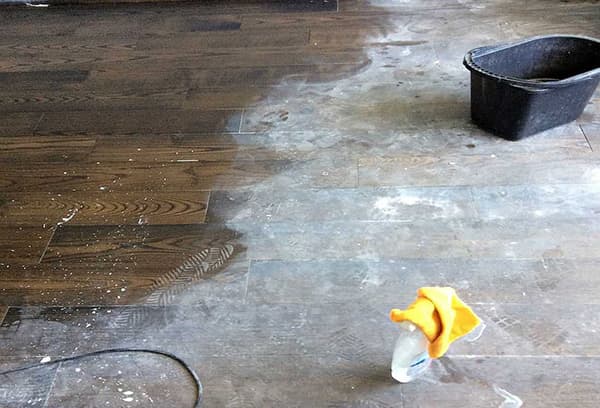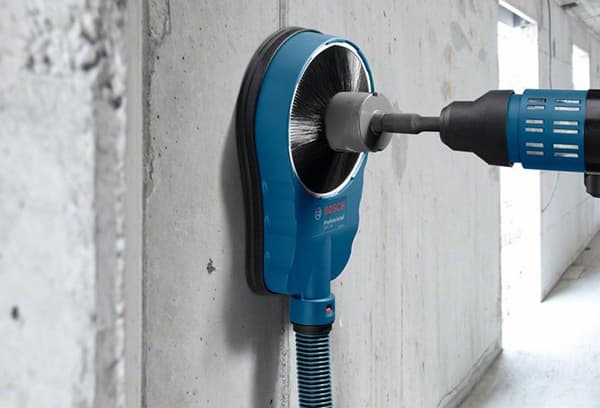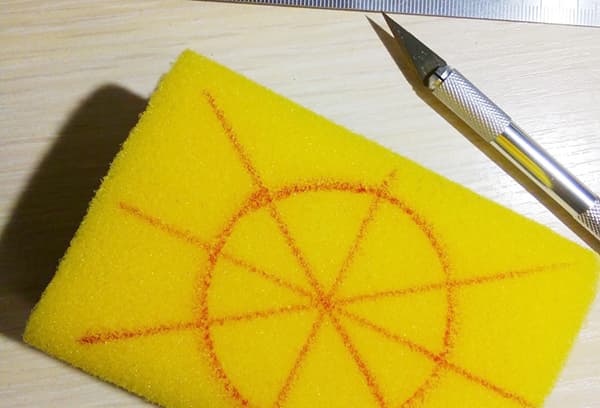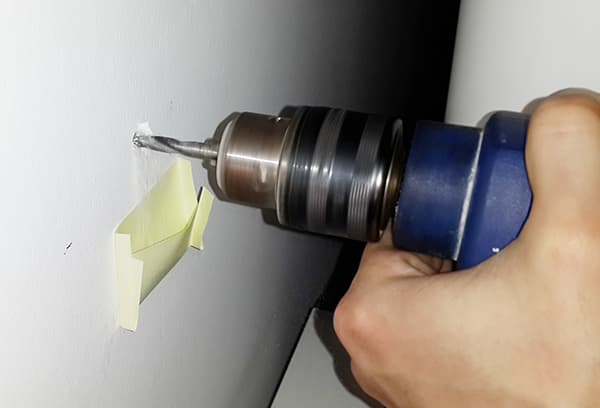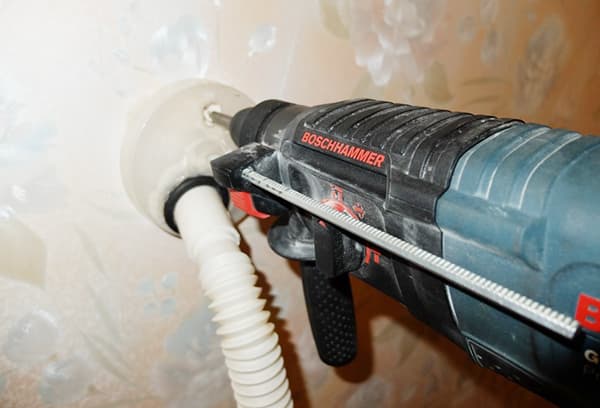How to drill a wall or ceiling without flying dust?
Content:
Anyone who has ever drilled holes in hard materials (concrete slab, foam block, brick) knows that during the work, “flour” (and sometimes larger particles) is continuously formed, which falls on surrounding objects and can get on clothes , in the eyes, nose and mouth. Therefore, many methods have been invented to allow drilling without dust. Let's compare several of the most common options and decide which one is better.
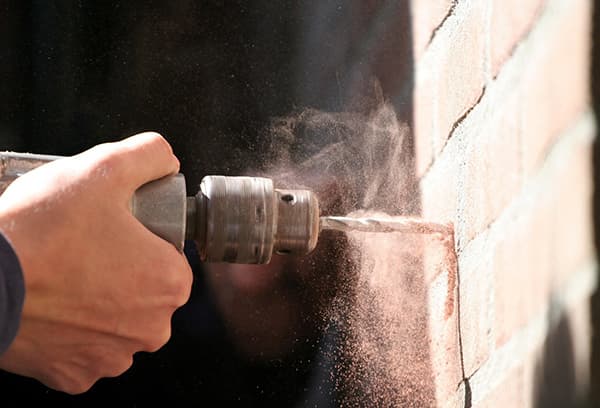
Where does dust come from?
As a rule, hard materials are drilled with a hammer drill or impact drill. A drill, drill bit or other tool destroys the material and brings small particles to the surface. There is a special impeller inside the power tool. Rotating, it drives cold air towards the cartridge, cooling the engine and preventing the mechanism from clogging. However, the air flow disperses the dust to the sides, lifting it into the air.
Depending on the nature of the material, the dust will be more or less coarse. Homogeneity also differs: particles can have the same size or form several fractions.
The dust generated during drilling is hazardous to health. It can dust your eyes and get into your lungs when you breathe.To avoid such effects, it is necessary to wear a respirator, safety glasses and a hat when working.
Why fight dust?
Dust is undesirable for many reasons:
- When dust enters the body, it causes health problems.
- Particles of cement or brick flour, getting into the gears of mechanisms, can damage them.
- When mixed with water, cement dust forms dirt that is difficult to wash off.
Therefore, it is customary to combat dust during repairs with all available means. To protect eyes, hair and skin, the construction worker wears special clothing, safety glasses, a hat and respiratory protective equipment (respirator or gauze bandage). Furniture and other things that cannot be removed from the room during repairs are covered with newspapers or polyethylene.
Devices and power tools are produced in dust-proof cases. The index of protection against dust and water ingress (IPxx) will help you find out the degree of protection of the device from dust. If the device has the index IP5x or IP6x, it is not afraid of dust getting inside.
However, all these measures only reduce the damage. Devices that collect dust even as it forms can radically solve the problem.
How do professionals deal with dust?
Professional builders have in their arsenal a special tool to combat the resulting flour: an attachment on a drill or drill, to which a hose from a vacuum cleaner is connected. This addition to the hammer drill helps collect garbage very cleanly, but it has a number of disadvantages:
- You have to spend money to purchase a nozzle. Such expenses are appropriate if you have to drill constantly. But if you occasionally have to drill one or two holes in the ceiling or wall, it is irrational to buy a special nozzle.
- As a rule, using the nozzle requires the help of a partner who will hold the vacuum cleaner. In everyday life, improvised do-it-yourself devices are used to solve the same problems.
Homemade dust control devices
Improvised devices sometimes cannot boast as complete dust removal as professional vacuum cleaner attachments. But they are much cheaper and often do not require assistance during use.
Drill attachment from a bottle or cup
If you need to drill a hole in the ceiling, the crumbled concrete will mostly fall down. To collect dust, a combination of a drill or auger and a bottle with a cut off bottom will help. An ordinary plastic cup will do, but it will need to be cut so that the part of the drill that will go into the wall protrudes above the walls. As a result, the “flour” falling down will fall into the cup and will be easy to remove.
Moistened sponge
You can make a nozzle from a sponge:
- the center is measured on it;
- draw a circle with a diameter of about 5 mm in the center;
- cut the foam rubber in a circle with a stationery knife and remove it to a hard substrate;
- a hole is made in the substrate into which a drill is inserted;
- Before starting work, moisten the sponge with water.
Like the previous device, this option is more effective if you need to drill the ceiling rather than the wall.
Paper envelope
An envelope made of thick paper is attached to the wall under the place where the hole will be drilled with double-sided tape. You can make it yourself by bending the sheet in half and staple it along the edge. The garbage will fall down, collecting in the envelope. Instead of an envelope, you can glue a paper cup.
The main disadvantage of this method is that light dust blown to the sides is not collected.
We use a vacuum cleaner
You can use the vacuum cleaner even without a special attachment.
- The easiest option is to draw in air with the narrowest slot-shaped nozzle. It creates a very powerful stream that draws in flour particles well. The disadvantage of this method is that you need an assistant.
- The second option is to build a nozzle from a plank with a drilled hole and a collection from a cut bottle attached to it. Then the drill is inserted through the holes in the bottle and the board, and the vacuum cleaner is connected to the neck.
We hope that the proposed methods will help you complete all work related to drilling as cleanly as possible, without unnecessary dust and labor costs.
